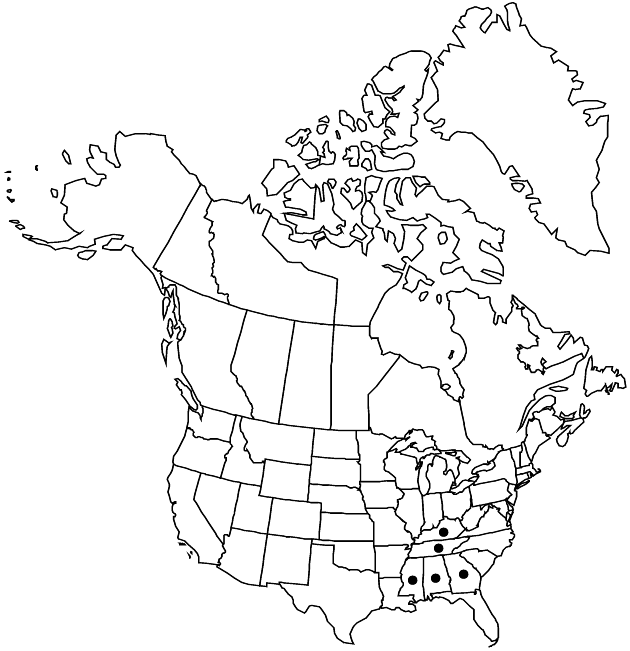Astranthium integrifolium
Trans. Amer. Philos. Soc., n. s. 7: 312. 1840.
Common names: Eastern western-daisy
Basionym: Bellis integrifolia Michaux Fl. Bor.-Amer. 2: 131. 1803
Revision as of 18:43, 24 September 2019 by FNA>Volume Importer
Annuals (biennials?), usually fibrous-rooted. Stems usually 1, erect to decumbent-ascending. Leaves: basal and proximal cauline 30–60 × 7–22 mm. Involucres 3.5–6 mm. Ray florets (8–)16–26; corolla laminae white, occasionally drying with bluish midstripe abaxially, (6–)8–17 mm. Disc floret corollas 2.5–3.7 mm. Cypselae (1.4–)1.6–2(–2.2) × 0.9–1.1 mm, faces minutely papillate-pebbly, linear striations barely discernible, usually glabrous, sometimes sparsely glochidiate-hairy distally. 2n = 8.
Phenology: Flowering Apr–Jun(–Jul).
Habitat: Rocky (limestone) banks and ridges, alluvial fields, stream banks and terraces, open juniper woods, glades, roadsides
Elevation: 50–300 m
Distribution

Ala., Ga., Ky., Miss., Tenn.
Discussion
Selected References
Lower Taxa
None.